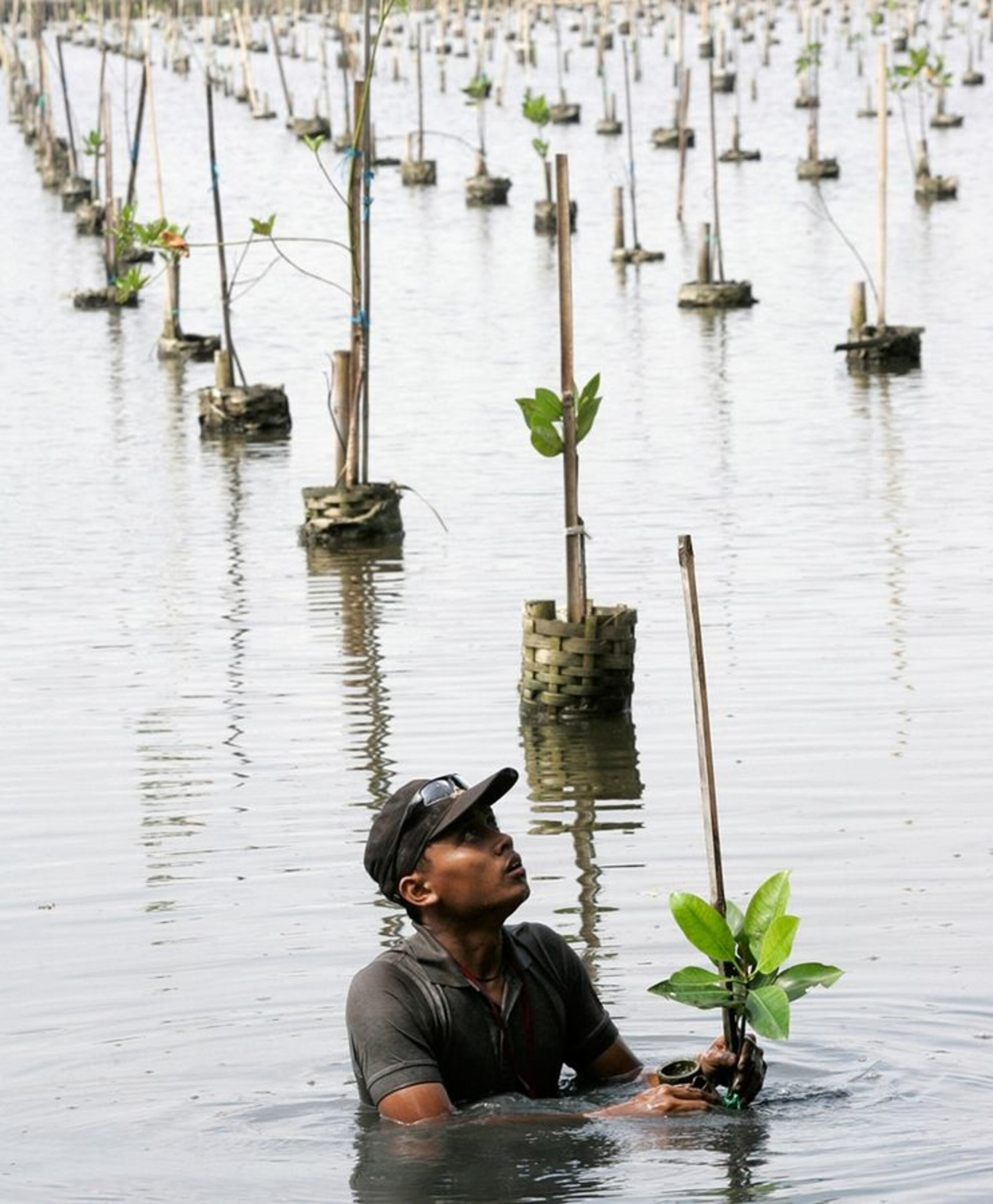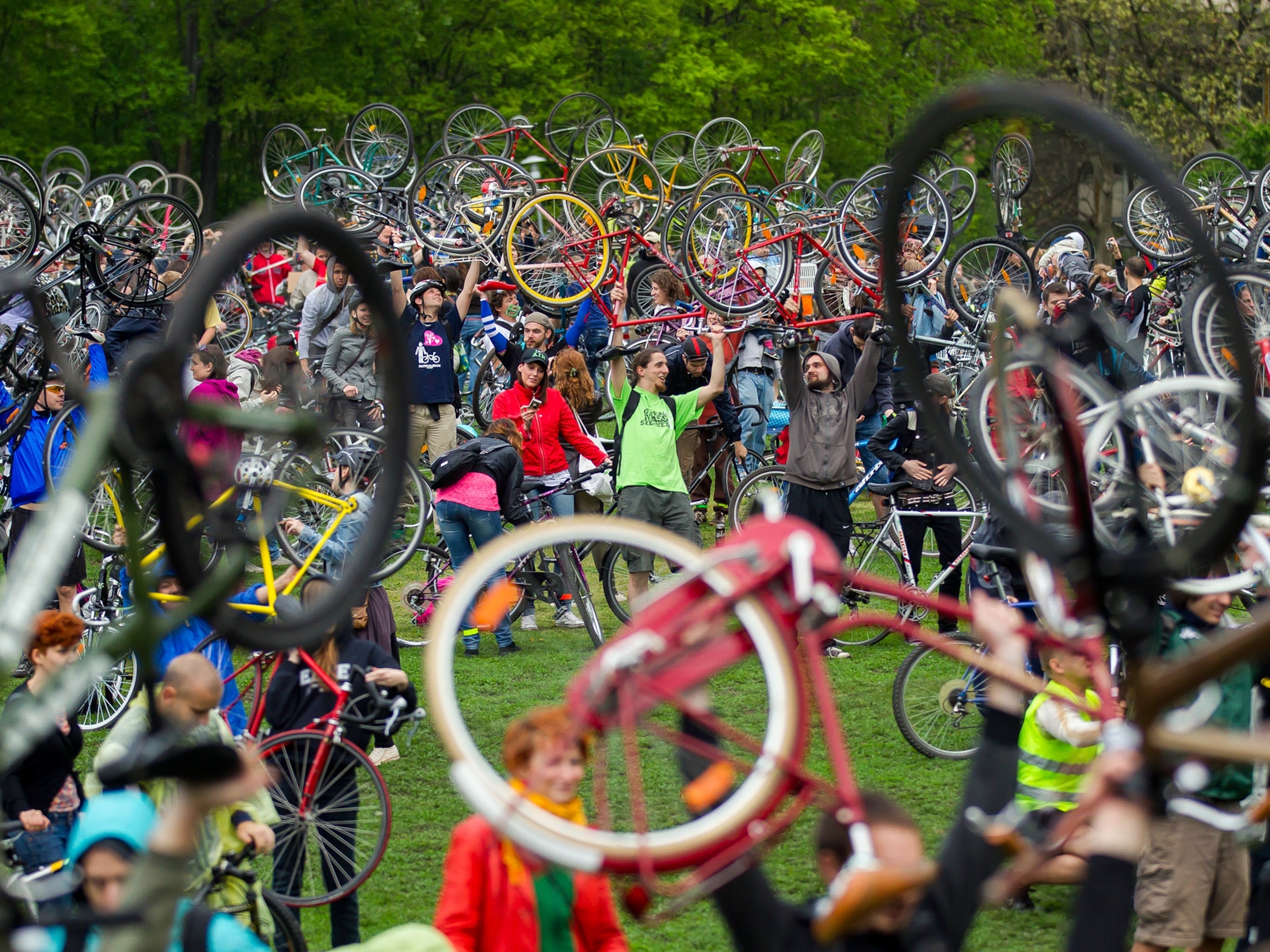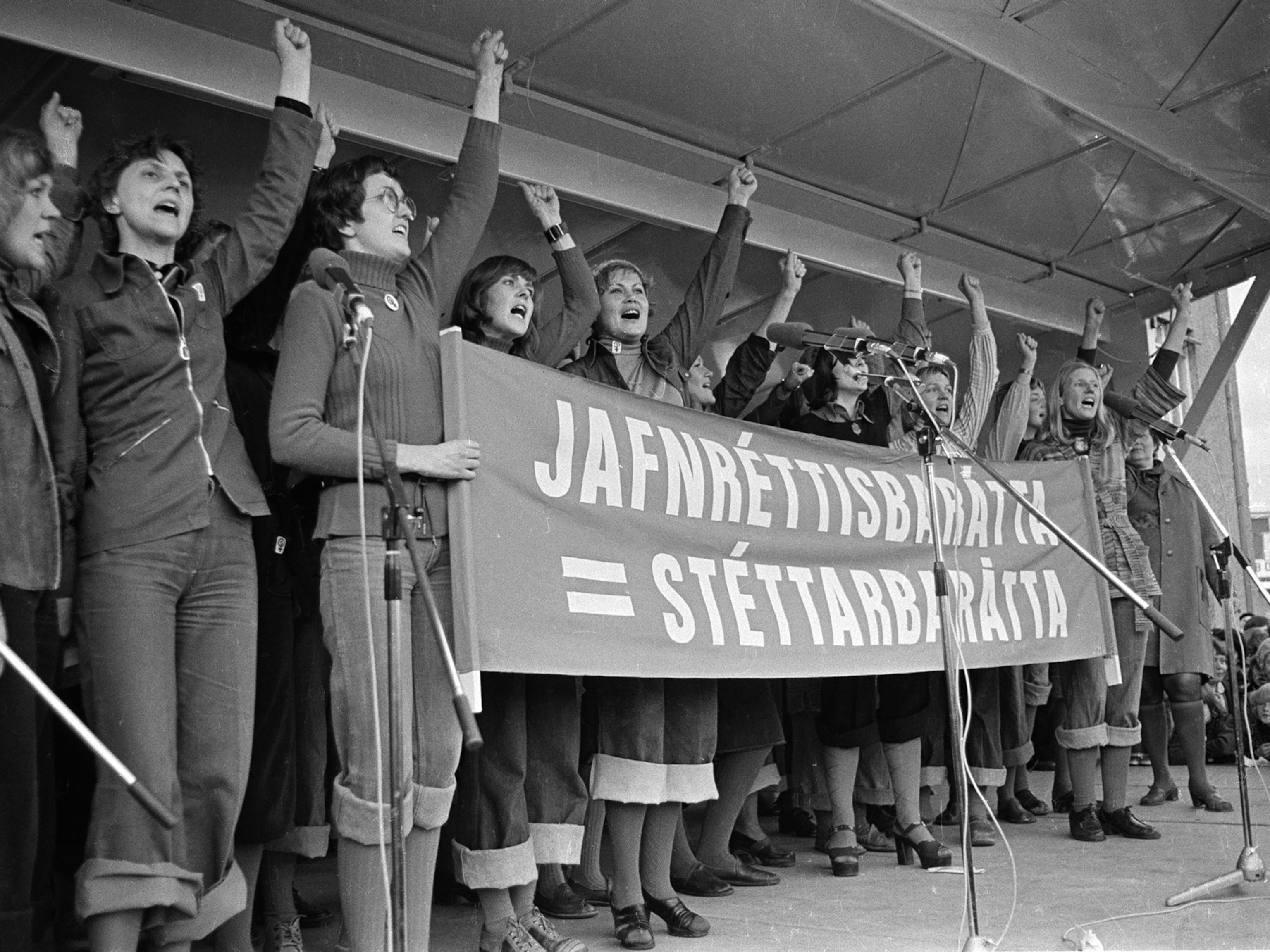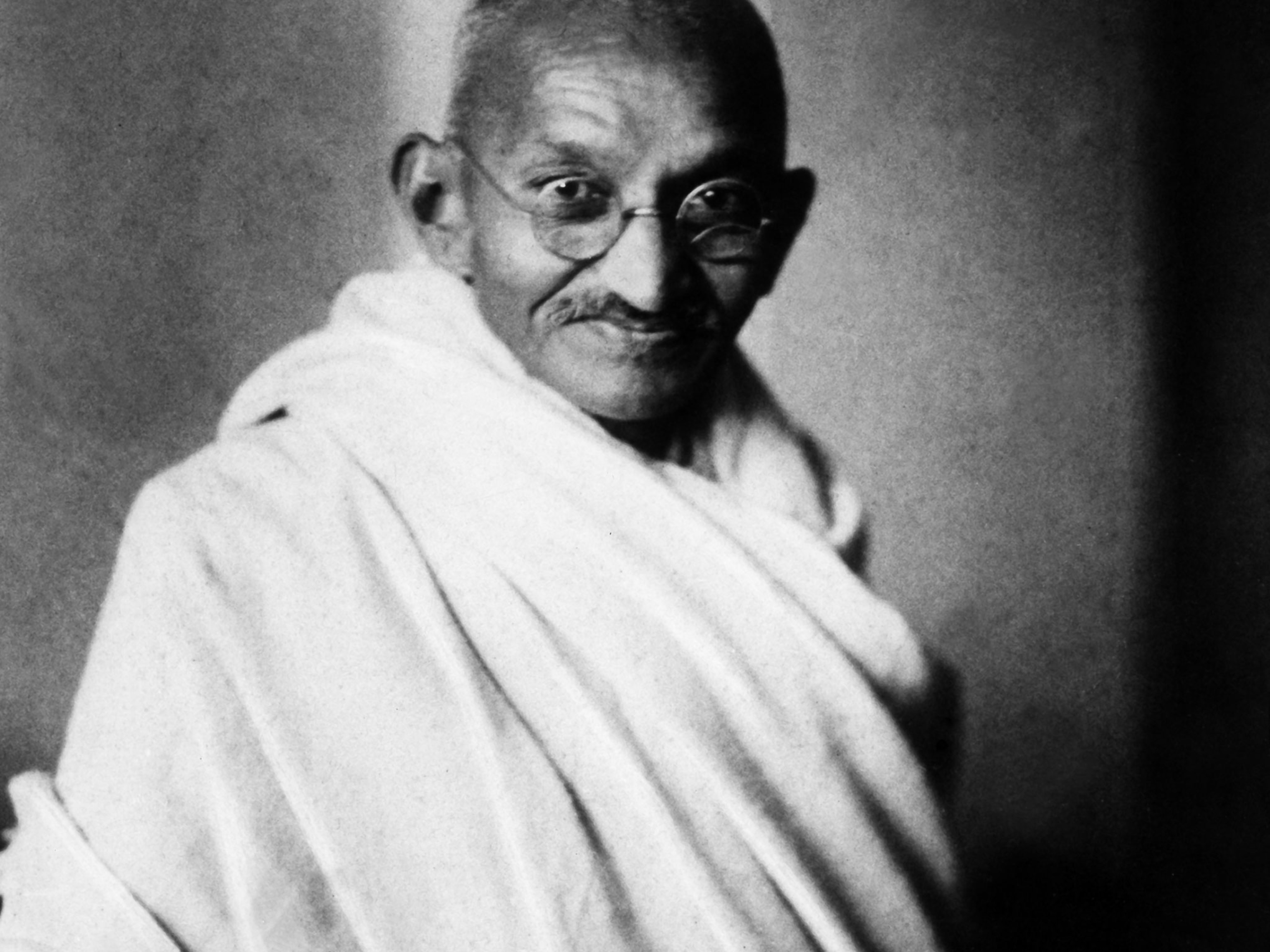
Earth Day at 40: How It Began, Where It's Going
Earth Day takes root online, though some disdain the event in any medium.
From grassroots beginnings in 1970, Earth Day—which celebrates its 40th anniversary today—has blossomed into a global tradition.
Organizers expect more than a billion to honor Earth Day in 2010—but many will do so with Facebook rather than megaphones.
As part of the Billion Acts of Green, an initiative organized by the Washington, D.C.-based Earth Day Network's Green Generation campaign, more than 30 million people will use social media to encourage green activities. One commenter on the Earth Day Network Web site named "Elroy," for example, plans to "shower with a friend"—presumably to conserve water and electricity.
Kathleen Rogers, president of the Earth Day Network, said that everyone is part of what she calls the green generation, which marks the transition from the industrial revolution to the green revolution. (Test your Earth IQ.)
The campaign aims to make Earth Day's 40th anniversary the moment when the green generation comes together to address pressing environmental concerns, such as the global freshwater crisis and global warming.
"The idea that we can all belong to something is what's exciting people and what's making them want to join," Rogers said.
Why is April 22 Earth Day?
Every day, the saying goes, is Earth Day. But it's popularly celebrated on April 22. Why?
One persistent rumor holds that April 22 was chosen because it's the birthday of Vladimir Lenin, the founder of the Soviet Union.
"Lenin's goal was to destroy private property and this goal is obviously shared by environmentalists," the Capitalism Magazine Web site noted in a 2004 article perpetuating the theory.
Rogers, whose Earth Day Network was founded by the original organizers of Earth Day, scoffed at the rumored communist connection.
She said April 22, 1970, was chosen for the first Earth Day in part because it fell on a Wednesday, the best part of the week to encourage a large turnout for the environmental rallies held across the country.
"It worked out perfectly, because everybody was at work and they all left," she said.
In fact, more than 20 million people across the U.S. were estimated to have participated in that first Earth Day.
(Pictures: The First Earth Day—Bell-Bottoms and Gas Masks.)
Earth Day is now celebrated every year by more than a billion people in 180 countries around the world, Rogers said.
Roots of Earth Day
Earth Day's history is rooted in the activist-driven 1960s, when the environment was in visible ruins and people were angry, according to Rogers.
"It wasn't uncommon in some cities during rush hour to be standing on a street corner and not be able to see across the street" because of pollution, she said.
Despite the anger, green issues were absent from the U.S. political agenda. This frustrated U.S. Senator Gaylord Nelson of Wisconsin, whose campaigns for the environment through much of the 1960s had fallen flat.
In 1969 Nelson hit on the idea of an environmental protest modeled after anti-Vietnam War demonstrations called teach-ins.
"It took off like gangbusters. Telegrams, letters, and telephone inquiries poured in from all across the country," Nelson recounted in an essay shortly before he died in July 2005 at 89.
"The American people finally had a forum to express its concern about what was happening to the land, rivers, lakes, and air—and they did so with spectacular exuberance." (See pictures of quirky Earth Day stunts.)
Nelson recruited activist Denis Hayes to organize the April 22, 1970, Earth Day teach-in, which today is sometimes credited for launching the modern environmental movement.
By the end of 1970, the U.S. Environmental Protection Agency had been born, and efforts to improve air and water quality were gaining political traction.
"It was truly amazing what happened," Rogers said. "Blocks just tumbled."
Earth Day Evolves
Amy Cassara, a senior associate at the World Resources Institute in Washington, D.C., analyzes global environmental trends.
She noted that, since Earth Day started, environmentalism has moved from a fringe issue to a mainstream concern. "As many as 80 percent of Americans describe themselves as environmentalists," Cassara said. (Learn how you can help this Earth Day.)
Environmental issues today, however, are less immediate than dirty air, toxic water, and a hole in the ozone layer, she added.
For example, the impacts of global warming are largely abstract and difficult to explain "without coming off as a doomsday prognosticator," Cassara said.
"As we become more industrialized and our supply chains become less transparent, it can be more difficult to understand the environmental consequences of our actions," she noted.
Earth Day Has Lasting Impact
Earth Day Network is pushing the Earth Day movement from single-day actions—such as park cleanups and tree-planting parties—to long-term commitments.
"Planting a tree, morally and poetically, requires taking care of it for a really long time, not just sticking it in the ground," Earth Day Network's Rogers said.
To help make the transition, the organization is aligned with a hundred thousand schools around the world, integrating projects with an environmental component into the year-round curriculum.
"They announce the results on Earth Day, so Earth Day becomes a moment in time," Rogers said.
The World Resources Institute's Cassara added that her organization uses Earth Day to convene with leaders in the movement and assess progress in their campaigns.
"[Earth Day] doesn't raise awareness among the general public in the same way that it used to. But it still provides a benchmark for reflection among those of us in the environmental community," she said.
What to Do on Earth Day?
Hundreds of events are held each year across the world on and around April 22 to mark Earth Day, Rogers said. (Related: "First Green Supersonic Jet Launches on Earth Day.")
Among the highlights for the 40th anniversary include the first community garbage cleanup in Kolkata (Calcutta), India, which does not have garbage-collection service. Rogers said that event is a stepping-stone in the establishment of an environmental movement in India.
"I think people would be extremely disappointed if it went back to the way it was," she said.
The King of Morocco, Mohammed VI, will formally announce a National Charter for Environmental and Sustainable Development on Earth Day 2010.
The novel idea was inspired by the Earth Day movement in the U.S., Rogers noted.
"He's a king that wants to represent the fabulous side of environmental protection," she said. "It's very forward thinking."
Earth Day Network's marquee event in the U.S. is an April 25 star-studded rally in Washington, D.C., calling on the nation's political leaders to combat global warming.
Big-name speakers at the rally include the Reverend Jesse Jackson; film director James Cameron; and a roster of musical guests including Sting, Bob Weir, and Tao Rodríguez-Seeger, grandson of folk singer Pete Seeger, who performed at the first Earth Day teach-in in Washington, D.C.
Anti-Earth Day
Don't expect to find Keith Lockitch, a fellow with the Ayn Rand Institute in Irvine, California, at any Earth Day rallies. Named for late novelist and philosopher Ayn Rand, the institute promotes the "principles of reason, rational self-interest, individual rights, and laissez-faire capitalism to the widest possible audience," according to its Web site.
The institute also opposes Earth Day as a celebration of the anti-capitalist environmental movement, Lockitch said.
"Whenever there is a conflict between protecting nature from any kind of human activity versus pursuing some human value, environmentalists will consistently side with nature," he said.
For example, he said that environmentalists protest the construction of hydroelectric dams because they might affect species habitat—even though industrial society needs electricity to survive.
Instead of celebrating the environmental movement, Lockitch said, "we should have a Be Proud of Being Human Day … not a Feel Guilty for Trampling on Mother Earth Day."








